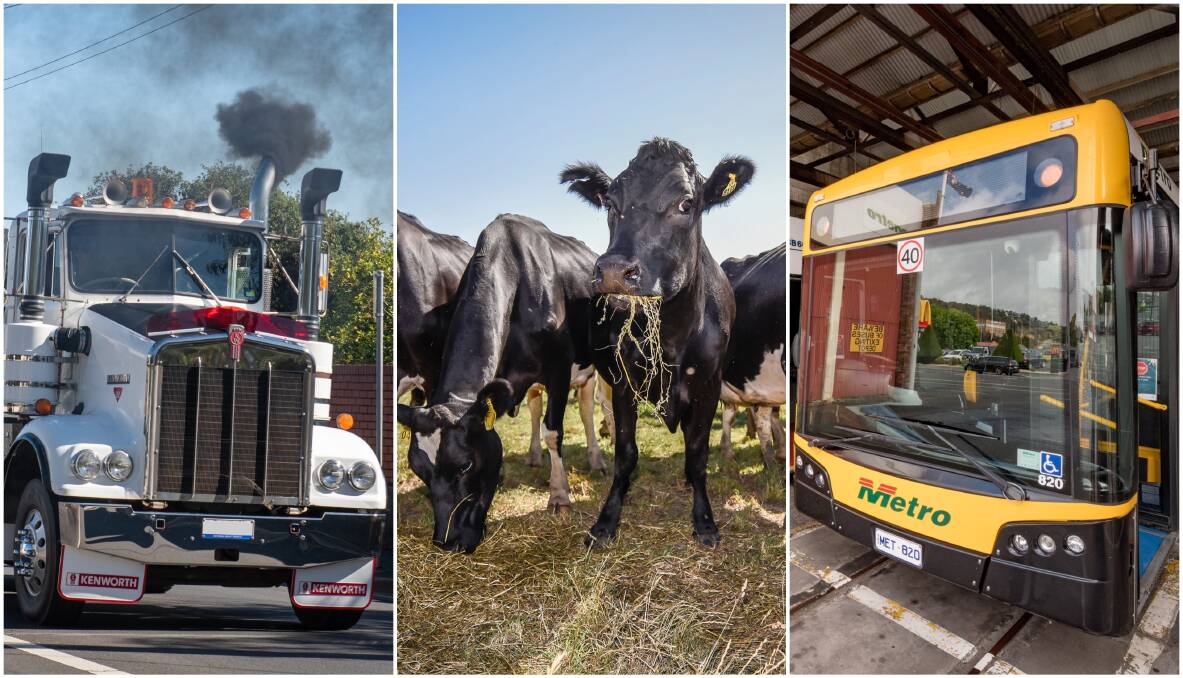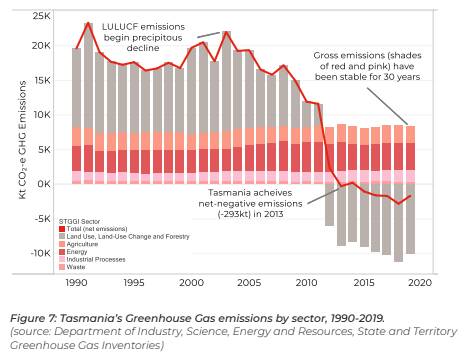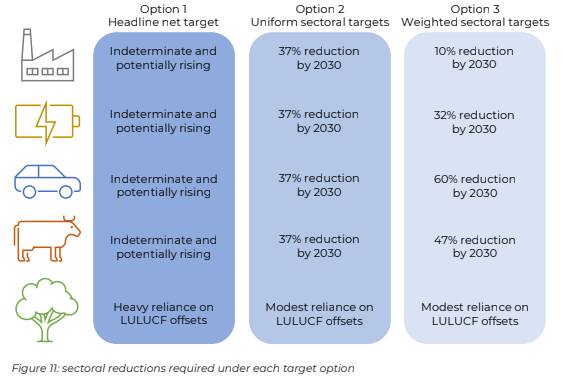
Tasmania must set a clear commitment to reducing emissions from transport, agriculture and industrial processes to ensure it maintains its net zero status in 2030, a University of Tasmania report has argued.
Subscribe now for unlimited access.
or signup to continue reading
The government plans to legislate a net zero by 2030 target, which it already technically meets due to the significant reduction in emissions and increase in offsets following forestry's demise almost a decade ago.
But a University of Tasmania report, to be released on Tuesday, argues that these offsets could decline by 2030 meaning more ambitious reductions in other sectors would be needed.
Tasmania's gross emissions in other sectors have been stable since 1990, but the government has not announced plans to establish set sectoral targets apart from accepting a recommendation to bring in sector-based decarbonisation plans.
The UTAS report, prepared by the Tasmanian Policy Exchange, outlined concerns about stable emissions in other sectors.
"The risks associated with Tasmania's current reliance on land-use offsets ... are further exacerbated by the fact that gross emissions in other sectors have been essentially stable since 1990," the report reads.
"Despite some reduction in total emissions from waste and a more recent (post-2010) decline in transport emissions, successive plans and years of climate policy have not reduced the state's gross emissions in other sectors.

"Modelling commissioned by the Tasmanian Government ... quantifies the likely decline in land-use credits and the subsequent scale of emissions reduction required across the wider Tasmanian economy over time."
The report called for a 37 per cent reduction across all sectors, either evenly distributed, or with higher reductions for higher emitters like transport and agriculture at 60 per cent and 47 per cent for the two sectors.
READ MORE: Are governments buying Tasmanian votes?
For transport, Tasmania could need to exceed national targets for electric vehicle uptake, bring in policies to progressively reduce carbon intensity of heavy vehicles and establish a strategy to reduce marine transport emissions.
The electrification of the state's transport system would be a target.
In agriculture, reductions could be achieved by scaling up the production of Asparagopsis seaweed for feed which could reduce emissions from ruminating livestock by 90 per cent.

Other feed such as 3-NOP, grape marc and cotton seed could also assist in reducing methane emissions.
The UTAS report argued that such ambitions could be more beneficial to the economy than taking a business-as-usual approach.
"A sectoral emissions reduction strategy would deliver modest economic benefits across all sectors of the Tasmanian economy and increase real Gross State Product by 0.19% by 2030 and 0.92% by 2050," it reads.
Premier Peter Gutwein and other ministers repeatedly say that Tasmania is already a leader in having a low-emissions economy and should be the "envy" of the world.
UTAS wanted to see a more proactive approach.
"Tasmania can be an example to the world on climate action, but much more needs to be done," the paper reads.
What do you think? Send us a letter to the editor:
Our journalists work hard to provide local, up-to-date news to the community. This is how you can continue to access our trusted content:
- Bookmark www.examiner.com.au
- Make sure you are signed up for our breaking and regular headlines newsletters
- Follow us on Twitter: @examineronline
- Follow us on Instagram: @examineronline
- Follow us on Google News: The Examiner














